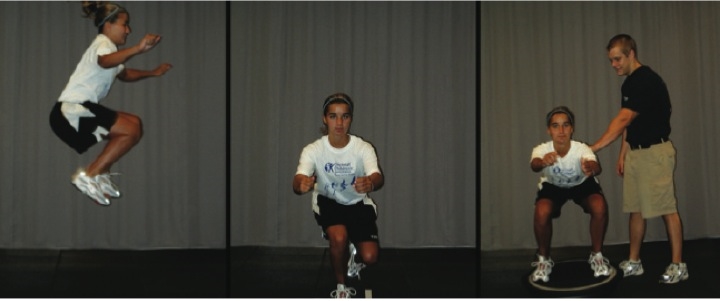An ounce of prevention is worth a pound of cure
-Benjamin Franklin
As warmer weather returns, many of us will increase our physical activity each week in an effort to improve our health, well-being, and physical performance. A common question asked in our clinic by our patients and clients recovering from an injury is “could this have been prevented?” Injury prevention is an important role for our clinic as the preferred provider for musculoskeletal pain and conditions. Prior research in the medical literature has documented the positive impact Physical Therapists can make in the identification of risk factors which may predis- pose groups of individuals from sustaining an injury in their sport.
For example, estimates of ACL ligament injury in the knee range from 80,000-250,000 per year and approximately 100,000 of these patients eventually undergo ACL reconstruction surgery(1,2,3). Physical Therapy researchers have identified modifiable risk factors associated with this injury including weakness, coordination, and balance deficits in an attempt to reduce the overall risk of this injury to our athletes. Hewett et al. designed a pre-season rehabilitation program to reduce these impairments in healthy athletes(4). The authors reported a 50% reduction in knee joint torque following this training program and additional researchers have shown these individualized programs can reduce injury risk by 30-80%(5,6).
This example on a common injury shows how powerful prevention programs can be for our athletes and clients. Clearly exercise is important for our overall health, but which exercises are most effective at reducing injury risk in our athletic endeavors? A recent systematic review of the available medical evidence by Lauersen et al. described the exercises with the most powerful impact on injury prevention7. In this review 25 studies were included of over 26,000 athletes who sustained 3,464 injuries in their sports. The authors noted no beneficial effects of stretching on injury prevention, but both balance/proprioception and strength training reduced the risk of sports and overuse injury in participants. The researched concluded these programs could reduce sports injuries by 1/3 and overuse injuries by 1/2.
To learn more about the effectiveness of prevention on sport and exercise injuries contact the experts at MEND Physical Therapy.
References
1. Frank, C. Jackson, D. The science of reconstruction of the anterior cruciate ligament. J Bone Joint Surg Am. 1997;79:1556-1576.
2 Griffin L, et al. Noncontact anterior cruciate ligament injuries: risk factors and prevention strategies. J Am Acad Orthop Surg. 2000;8:141-150.
3 Hughes, G. Watkins, J. A risk factor model for anterior cruciate ligament injury. Sports Med. 2006;36:411-428.
4 Hewett, T. et al. ACL cruciate ligament injuries in female athletes: Part 2, a meta-analysis of neuromuscular interventions aimed at injury prevention Am J Sports Med. 2006;34:490-498.
5 Hewett, T. Johnson, D. ACL prevention programs: fact or fiction? Orthopedics. 2010;33(1)36-39.

